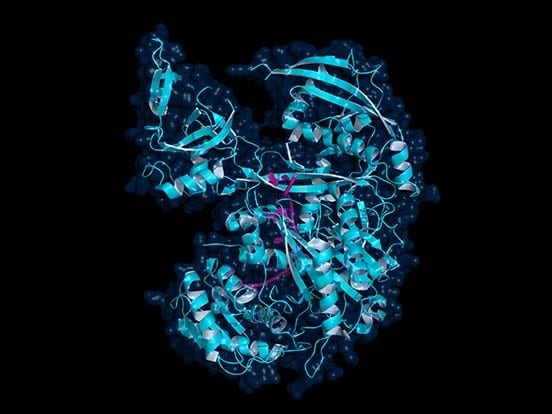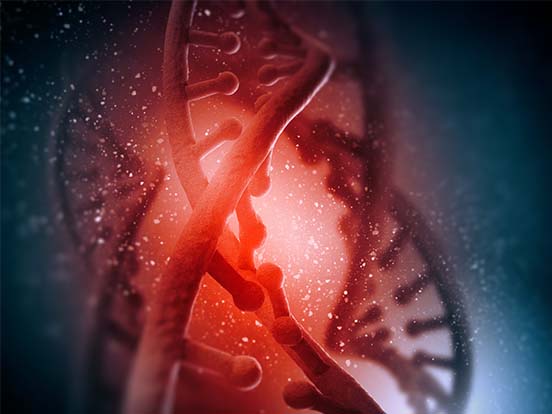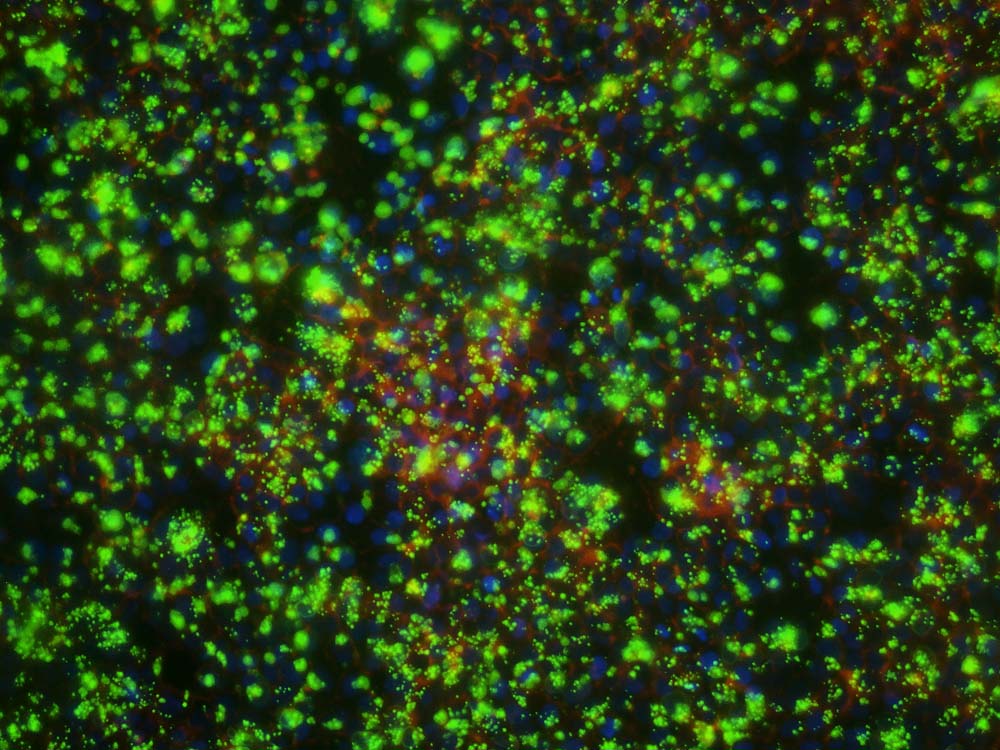
GeneSilencer® siRNA Transfection Reagent
Efficient transfection of siRNA into mammalian cells
Efficient siRNA delivery is critical for successful silencing of genes. GeneSilencer® siRNA Transfection Reagent is a novel cationic lipid formulation specifically designed for efficient delivery of siRNAs into a wide variety of cell types including primary cells (see table below).
GeneSilencer® siRNA Transfection Reagent has a low toxicity profile while maintaining high transfection efficiencies - in some cases up to 90%. This contrasts sharply with nuclear electroporation methods, which can result in very low viabilities, and viral methods, which are cumbersome, time-consuming, and raise potential safety issues.
See our full siRNA product range
Features
- Easy-to-use protocols for both adherent and suspension cells
- Low cytotoxicity
- High siRNA transfection efficiency
- Functional gene silencing post siRNA delivery
- Compatible with diverse growth conditions (with and without serum)
| Name | Datasheet | Packsize | Order |
|---|---|---|---|
| GeneSilencer siRNA Transfection Reagent (0.75 ml) | - | 200 reactions | View |
| GeneSilencer siRNA Transfection Reagent (5 x 0.75 ml) | - | 5 x 200 reactions | View |
| GeneSilencer siRNA Transfection Reagent | 50 Reactons | View | |
| GeneSilencer siRNA Transfection Reagent Sample | - | 25 x 10 reactions | View |
| GeneSilencer siRNA Transfection Reagent, Trial Size | 1 x 10 reactions | View |
Application Data
Primary cells successfully transfected with GeneSilencer® siRNA Transfection Reagent
- Aortic muscle cells
- Alveolar type II cells
- Bone marrow
- Cardiac fibroblasts
- Cardiac myocytes
- Cerebellar neurons
- Coronary artery endothelium
- Cortical neurons
- Dendritic cells
- Dorsal root ganglion neurons
- Hippocampal neurons
- HMVEC
- Lacrimal gland acinar cells
- Lung microvascular endothelial cells
- Macrophages
- Osteoblasts
- Pulmonary artery endothelium
- Retinal ganglion
- Schwann cells
- T-cells (CD3+)
How does the GeneSilencer® siRNA Transfection Reagent work?
The GeneSilencer® siRNA Transfection Reagent works by forming non-covalent complexes with siRNA oligonucleotides, and subsequently binding to cell membranes. The siRNA/GeneSilencer® complexes are taken into the cellular cytoplasm primarily via endocytosis. Once inside the cells, the siRNA is released to achieve sequence-specific gene silencing through RNA interference. View our Top 10 Tips for Gene Silencing & Delivery.
GeneSilencer® Reagent
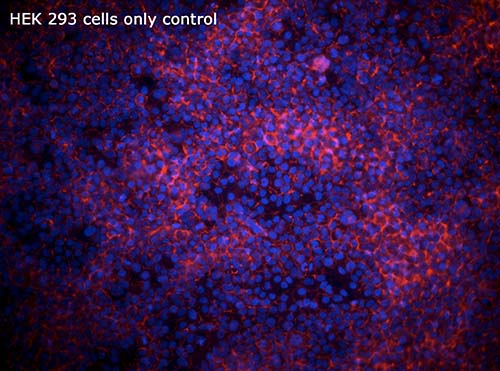
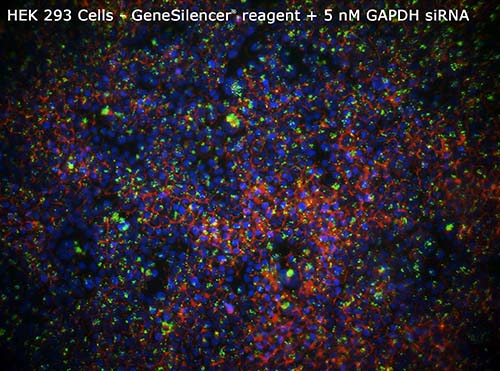
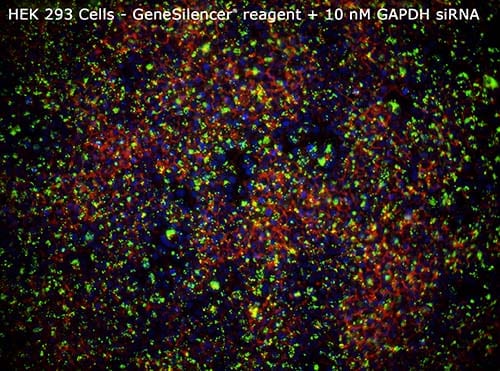
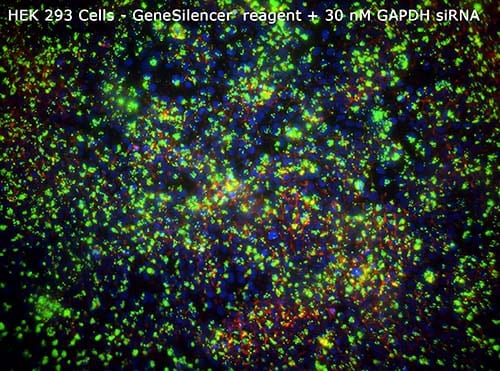
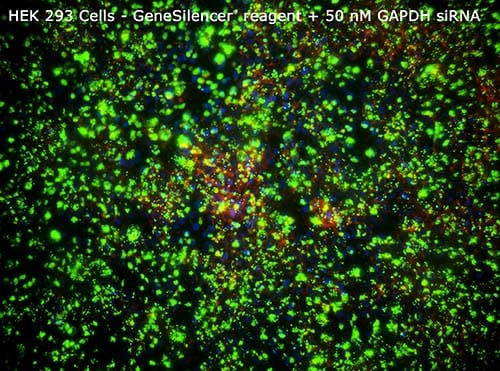
siPORT™ NeoFX™ Reagent

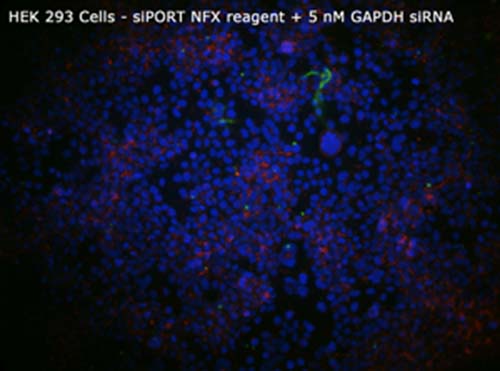
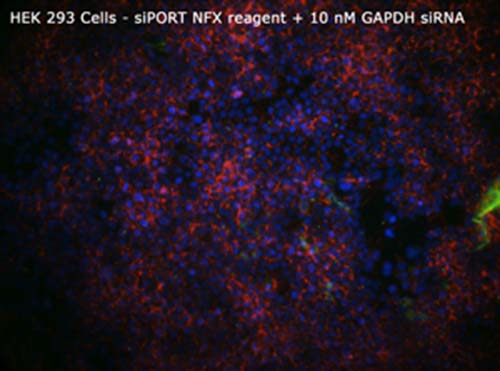
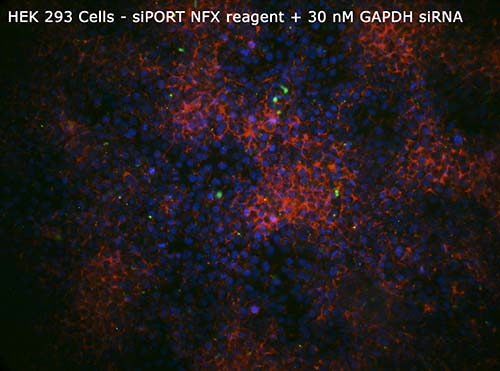
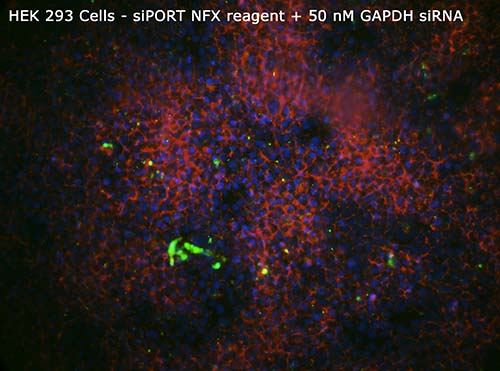
Fig. HEK 293 cells were transfected with 5, 10, 30 or 50 nM of Silencer® FAM Labeled GAPDH siRNA with either GeneSilencer® or siPORT NeoFX™ (Ambion) siRNA transfection reagents according to the manufacturer's recommended protocols. Cells were incubated for 48 hours then fixed, permeablized, and incubated with AlexaFluor® 555 phalloidin (Invitrogen), which stains cellular actin red. Cells were then mounted on slides and stained with DAPI (Invitrogen), which stains the cell nuclei blue. Transfected cells were visualized by fluorescence microscopy using identical exposure times for FITC, TRITC, and DAPI. The transfected GAPDH siRNA is localized in the cell cytosol and can be seen as green fluorescent specks or dots. For additional transfection data, see here.
Storage: GeneSilencer® siRNA Transfection Reagent is shipped at room temperature. For maximum stability, store all reagents at 4˚C upon receipt. If stored properly, all components are stable for 6 months
